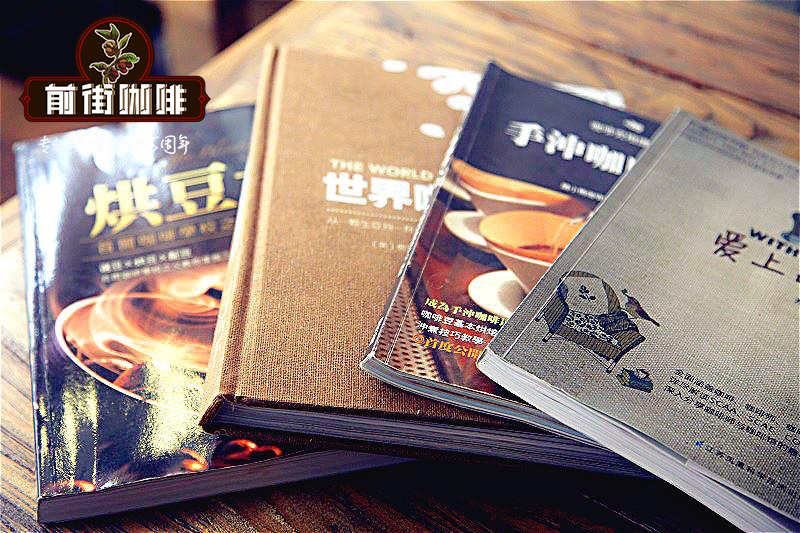The different Trade methods of Mexican Coffee Fair Trade interpretation of Mexican Coffee Industry

Professional coffee knowledge exchange more coffee bean information please follow the coffee workshop (Wechat official account cafe_style)
The story of coffee starts with international trade. Unequal trade, on the one hand, is an outcry market with huge funds, and no amount of profits can make up for the greed of merchants; on the other hand, countless small coffee farmers are destitute and destitute; and forests fall down and are replaced by single-grown coffee. The land is ravaged by pesticides and fertilizers, and tens of thousands of creatures and innocent coffee farmers are poisoned.
Because coffee is the second largest commodity in the global market after oil, the problem of coffee has also been taken seriously. Fair Trade, Organic, Shade and friendly Bird Coffee tries to construct a solution to the devastated producers and producing environment. The best example is in southern Mexico, a major coffee-producing region of Mexico, and the traditionally poor provinces of Chiapas and Oaxaca.
Coffee ── from Free Market to Fair Trade
By the year of ○○, there are only four major coffee buyers in the world; Philip Morris, Nestle, SaraLee and Procter and Gamble are responsible for 60% of the trade market, so it is not difficult to imagine that the imbalance between supply and demand and the speculative oligopoly market will lead to a sharp rise and fall in coffee prices.
The income of producers accounts for only a small part of the selling price, especially in the past 10 or 20 years, with several price crashes, it is not difficult to imagine that coffee farmers are facing unprecedented difficulties. With the emergence of fair trade initiatives and production and marketing mechanisms, coffee is the primary agricultural product of the fair trade movement.
The search for a different way of trading coffee was initiated in Mexico.
A country where about 90% of Mexican coffee farmers own less than five hectares of land and about 70% of coffee farmers own less than two hectares of land. UCIRI (Uninde Comunidades Indgenasdela Regindel Istmo,UCIRI) is the forerunner of the coffee fair trade movement around the world. In the experience of Mexico, it is indistinguishable from the traditional "organic" and "shade" farming patterns of the local Mayan aborigines.
The Tehuantepec area of Oaxaca province has been growing coffee since the late 19th century, and farmers rely on the low purchase price of the acquirer "coyote" (coyote). In 1973, the Mexican Coffee Institute (InstitutoMexicano del Caf,INMECAFE) and the Grameen Bank entered the area to provide assistance, which at first brought hope to farmers, but in the end it was ineffective. For example, in the end, INMECAFE seriously defaulted on the payments paid to small farmers, and the problem with the Grameen Bank was enough to make small farmers heavily in debt.
In order to solve the problems of middlemen and official institutions and to improve their livelihood, local farmers began to find fair purchase prices in 1981, and a cooperative UCIRI was established in 1983. The addition of several Dutch and German missionaries promoted UCIRI's work to find a reasonable price and fair market, which was sold to many countries in Europe and North America. At present, there are 53 communities in the production of the cooperative, with about 2700 farmers joining it.
The emergence of UCIRI, the liquidation of the official organization INMECAFE in 1989 because of corruption and poor operating conditions, and the collapse of the international export price of Mexican coffee to historic lows in the late 1980s and early ○ have all prompted the rise of small farmers' cooperatives in southern Mexico, such as Oaxaca and Chiapas provinces, in order to obtain better guaranteed purchase prices, and to give back to community development and break away from the exploitation of middlemen.
Shade coffee, friendly bird coffee
Mexican coffee Arabica coffee is mostly grown in mountains 600 to 1200 meters above sea level and in tropical or subtropical forests. The popular way for aborigines to grow coffee is traditional agroforestry. Coffee is planted among a variety of native trees, and the ecosystem is close to forest. However, in order to open up the market, this agroforestry is disadvantageous to rapid mass production, instead of cutting down trees in all farms and putting in large amounts of pesticides and fertilizers; biodiversity and soil fertility are greatly lost, which has a considerable negative impact on the ecology. The shade coffee of traditional agroforestry, that is, coffee grown in the shade of trees, is very different. This tillage model not only has a good canopy provided by rich tree species, but also has high humus, biodiversity, carbon sequestration, water conservation, prevention of soil loss and other functions, but also an important habitat for migratory birds in North America.
In the late 1980s, small farmers' cooperatives emerged one after another, which coincided with the pursuit of fair trade and organic coffee markets in Europe and the United States. in addition to organic coffee, the importance of shady and friendly birds should not be underestimated. Therefore, the research and certification units in the United States are not only engaged in "organic" certification, but also emphasize the certification of environmental benefits, including Rainforest Alliance certified coffee (the Rainforest Alliance Coffee), friendly bird certified coffee (The SmithsonianMigratory Bird Center Bird-Friendly Coffee), canopy, biodiversity, and so on.
A cup of coffee, as a seed to change the world, needs more.
The rise of Fairtrade, Organic, Shade Coffee and friendly Bird Coffee in Mexico is closely related to the consumer movement in Europe and the United States. When consumers find that ── Coffee, a popular commodity in the world, has led to the exploitation of small farmers and the environment of producing areas, how to use the power of moral consumption has become a new possibility to change the world. At present, organic coffee production accounts for 1.5% of the global coffee market; behind this figure, it also represents the story of small farmers living in dignity in many third world countries. In the coffee market, Fairtrade and organic coffee are highly repetitive. When we consume organic, fair trade and even shady, bird-friendly coffee, it is more important to adhere to a socially and ecologically sustainable attitude.
Important Notice :
前街咖啡 FrontStreet Coffee has moved to new addredd:
FrontStreet Coffee Address: 315,Donghua East Road,GuangZhou
Tel:020 38364473
- Prev

What is Sai Feng cooking and what is a siphon pot? Siphon pot coffee belongs to immersion extraction.
Professional coffee knowledge exchange more coffee bean information Please pay attention to coffee workshop (Wechat official account cafe_style) siphon pot is an European invention (different brands of siphon pot may be printed on the introduction, from Germany, Scotland to France, anyway, it is European), but now all over the world, let the siphon coffee pot brew coffee to carry forward the light
- Next

How do you drink Mexican coffee? how do you drink Mexican local coffee? what's the taste and flavor?
Professional coffee knowledge exchange more coffee bean information Please follow the coffee workshop (Wechat official account cafe_style) probably all Chinese have come into contact with coffee, all of which are in Nestl é instant bags. For a long time, from the original flavor, the smell of milk to extra-strong, black coffee, to lattes, mochas, white coffee, accompanied by the endless high school summer afternoon, sleepy and hard to study until the first time after work.
Related
- How did the Salvadoran coffee industry develop in Central America?
- What exactly does the golden cup extraction of coffee mean?
- The Origin of Coffee flower
- [2023 Starbucks World Earth Day] there are more meaningful things besides free Starbucks coffee!
- What kind of coffee is there in Spain? 9 Flavors of Spanish Coffee
- Aromatic African coffee| Kenya's coffee culture and historical production area
- Liberica Coffee Bean knowledge: the characteristics of Liberian Coffee beans of the three original species of Coffee beans
- The origin and formula of Spanish latte introduces the taste characteristics of Bombon coffee in Valencia, Spain.
- How to adjust the solution of over-extracted coffee
- What is the tasting period of coffee beans? What is the period of coffee and beans? How should coffee wake up and raise beans?

